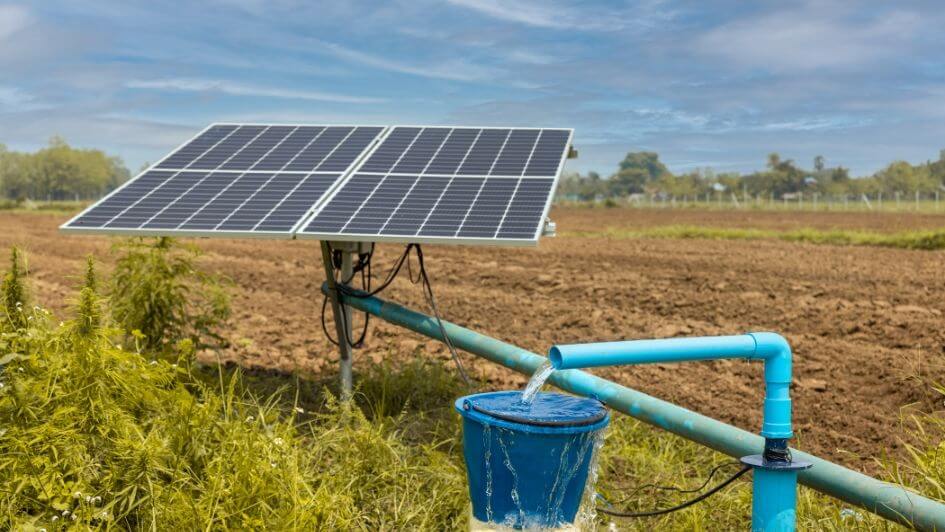We have all come to understand there is a strategic role of renewable energy in climate change adaptation and in mitigation-adaptation synergies on the African continent. Renewables-based adaptation solutions will promote adaptation and reinforce mitigation efforts synchronously across multiple sectors. As a versatile energy resource, renewables can serve a broad range of adaptation needs and provide benefits that other energy resources cannot deliver. It has been affirmed how specific adaptation needs and potential renewables-based solutions can be applied in expansion and support of five important sectors including: water, food, agriculture, forestry and human health.

Africa has 43% of its population, that’s about 600 million people living without electricity despite its abundant renewable energy potential. The presence of consistent electricity supply has shown a significant role in sustainable development. Unsustainable electricity supply contributes negatively to national economic and industrial goals and vice versa. We believe strategies to promote production and conservation of renewable energy in Africa will be another step toward a just transition, and equitable and sustainable adaptation.
Distribution of renewable energy technologies on the face of Africa can create a resilient energy system, which can support vital adaptation measures, for the most vulnerable communities. For instance, the residents of coastal or rural communities, who are most affected by climate change, often face the most difficulty in adapting to and recovering from its impacts. In these locations, distributed renewable energy solutions can ease exposure to climate change impacts by providing “green infrastructure” and employment opportunities in indispensable sectors. Renewable energy could be used to maintain and pump clean water supply to marginalized communities, recycling of dirty water and hence reducing water insecurity. It can be applied in the agricultural sector through mechanical irrigation, preservation and production of food. Through such processes food production could be greatly advanced with a considerable decrease in food insecurity especially when faced with climate change impacts and natural disasters. Eventually, long-term access to reliable energy through distributed renewable energy solutions not only builds better community services, but also promotes self-resilience and adaptive capacity in the local societies decreasing their vulnerability to climate change risks. All this is possible even without requiring huge upfront infrastructure investment.
Renewables can besides deliver non-energy services that contribute to climate adaptation. This multifunctionality enables renewable energy technologies to provide additional forms of resilience to climate change. For instance, the multipurpose nature of hydropower and bioenergy technologies is well recognised, and their non-energy services have been used in real adaptation projects, such as solar shading; use of byproducts from biogas facilities to make organic fertilizer; and water harvesting from hydropower dams. Well-designed and integrated climate adaptation policies should take advantage of the energy and non-energy services that renewable energy technologies provide. For that reason, in this error of climate change all countries must focus on planning and financing for renewables-based adaptation. Right now, it’s promising since many countries are beginning to recognise renewable energy as a synergistic mitigation-adaptation measure and have incorporated it into their nationally determined contributions (NDCs), and under their long-term development strategies under the Paris Agreement. Of the 190 countries that had submitted NDCs by the end of 2020, 64 (34%) had incorporated renewable energy into the adaptation component.
Although most of those countries describe renewable energy as an adaptation measure for the energy sector, its use for adaptation in other sectors, such as water, food and agriculture, is frequently missed out. Many countries, particularly small island developing states and countries in the Middle East and the Africa region should consider using renewables in the water sector to power desalination and wastewater treatment technologies, and thereby combat climate change-induced water security concerns. Moreover, we also know that if the global community chooses to invest in renewable energy, it will end up preserving forests by eliminating the need to use wood for heating and cooking. Consequently, we urge that enhancing the adaptation components of NDCs including renewable energy must be given first priority at this year’s COP 29.
Climate finance which has been provided and mobilized for adaptation activities has significantly increased, rising to USD 16.8 billion in 2018 and accounting for 21% of total climate finance, up from 17% in 2016. Nevertheless, a considerable amount of adaptation finance remains untapped, and renewables-based adaptation could be a prime candidate for these funding opportunities. We anticipate our African National leaders to consider renewal energy as an adaptation strategy and place it at the forefront of sustainable adaptation solutions. In end all our governments ought to invest in empowering their citizens in such global topics and solutions so as there is more room for unceasing climate innovation and effective climate action contributions both nationally and internationally.
